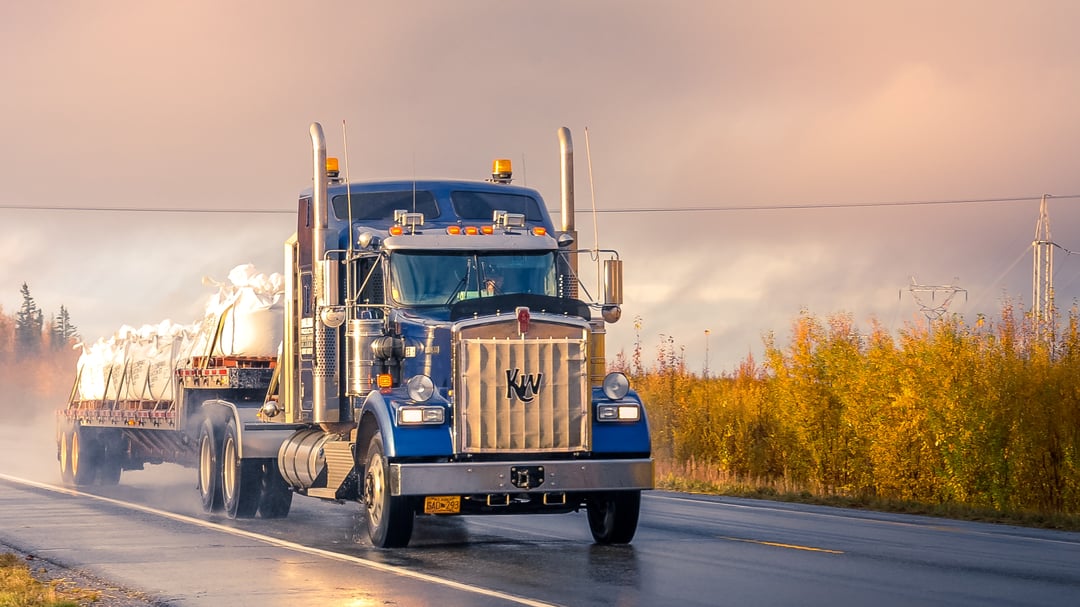Truck washing tips and trends have come a long way over the past 50 years.
Companies took weeks to wash their own fleets, if they washed at all. But now, with modern chemicals and improved technology in truck washing equipment, the process has been drastically improved in both effectiveness and time spent.
But trucks are out on the road much longer than they ever have, which increases their exposure to more dirt, snow, salt, and other contaminants.
This has placed a bigger emphasis on a quick turnaround, especially with the labor market as tight as it is.
So we decided to take a look at some of the biggest truck wash trends of 2022 to see how companies around the world are addressing these issues.
1. Automated Fleet Washing Systems
In the search for a more efficient fleet wash turnaround, people are turning to automated truck wash systems.
That’s because automated truck wash systems can clean a truck up to nine times faster than doing it manually.
The ability to have the equipment and soap take care of the cleaning "labor" instead of an additional employee has benefits beyond paying an hourly wage.
Its biggest benefit is being able to predict the number of resources you use per wash.
You can estimate how much water, time, and manpower it takes to clean an entire fleet, which makes scheduling much easier and reduces vehicle downtime. This is a game changer when you manage a large fleet. The ability to have a driver take only a few minutes to go through an automated wash system is incredibly progressive when compared to handwashing in a manual wash bay.
2. Controlling Operation Costs
Both private fleet owners and mobile washers are doing anything they can to help control their ever-increasing operation costs.
In response, we’ve noticed more companies choosing to purchase in bulk. This can mean buying products that are more concentrated, or by buying more items at one time.
Other companies are choosing to buy locally to avoid shipping costs.
But we've found ordering entire pallets of truck washing soap can reduce your cost per gallon in regards to shipping, as well as ensure that any supply chain issues are reduced.
3. Touchless Fleet Washing
We’ve all been there — washing our trucks by hand. Not only does it take a long time, but it takes a serious physical toll on your team.
That’s why more and more companies are opting for a touchless fleet washing process. It reduces the physical effort and can also reduce the labor cost.
But there’s a catch.
If you aren’t brushing the surface of your truck during the clean, it can be hard to remove road film. That’s when combining an acidic pre-soak alongside an alkaline detergent in a 2-step truck wash process becomes the most effective cleaning method to remove road film.
In addition to increased use of the 2-Step washing process, some in the industry are using a 1-Step touchless process on off weeks when the trucks aren’t quite as dirty, or if they’re required to have a faster turnaround time.
4. Increasing Productivity
Because of the tight labor market, it’s become increasingly important to make sure that the wash process is as streamlined as possible.
This means there’s been an uptick in the use of multiple pressure washers, remote systems, or 2-Step Guns to try and get the vehicles back on the road quicker.
There’s also been a rise in the aim of simplifying the process due to higher turnover in the labor market.
The purpose of having a specific soap to match every single situation has been minimized - the goal now is to make sure that the chemicals you wash with can work for almost any situation.
5. Environmentally Conscious Truck Washing
The Clean Water Act has started to gain more attention and more local municipalities are making a bigger effort to be compliant.
According to the act, businesses should check with not only their client's requirements but also the local government, which may include a specific draining system, a way to capture runoff, or by washing on a different kind of lot.
That’s because there is often a lot of grease, oil, and other harmful contaminants that runoff to storm drains and eventually into the environment. And it’s not just the dirt and grime. A lot of truck wash chemicals contain strong acids and harmful preservatives as well.
That’s why our chemicals are readily biodegradable, formulated without phosphate salts, and offer near-neutral waste water runoff when used in a 2-Step wash process.
Will These Trends Hold Throughout the Year?
The global car and truck wash market is projected to grow by $5.82 billion between 2021 and 2025.
And as more companies move into untapped regions, we will continue to see them look for a way to lower their cost per wash.
That’s why we believe these trends will hold for quite some time, especially as people experience the value of automated systems and more efficient truck washing chemicals.
But there is more to fleet washing than great products — you need to find the right solution for your business. That depends on numerous factors from your location, to the climate, to the types of vehicles you want to be cleaned.
Want to Optimize Your Fleet Wash Operation?
At Hydro-Chem Systems, we’ve helped countless customers clean more for less by taking their needs into consideration and customizing a fleet washing solution.
To find out what type of system works best for you, give us a call today at 616-531-6420 so you can feel confident your fleet is spending less time in the garage and more time on the road.


